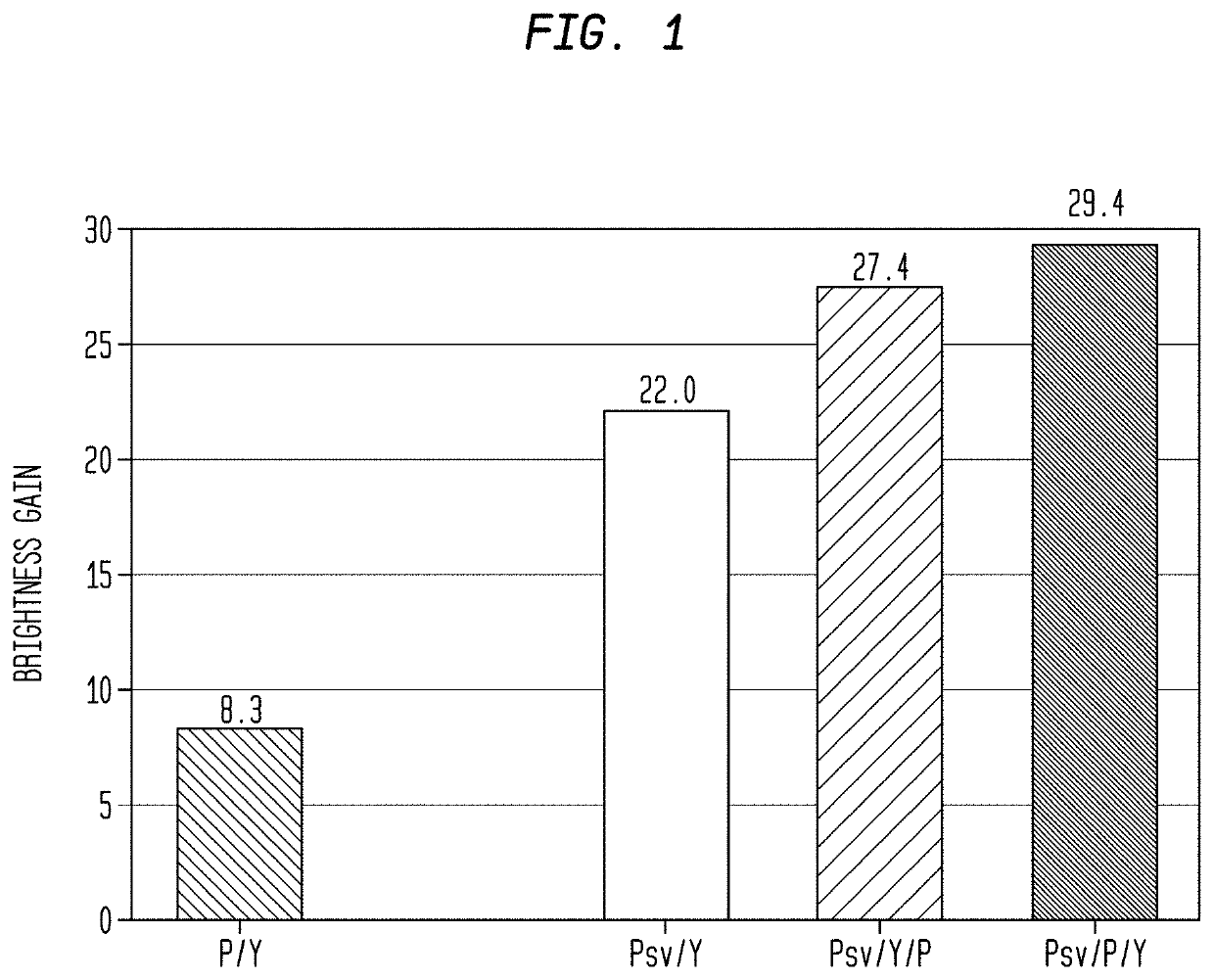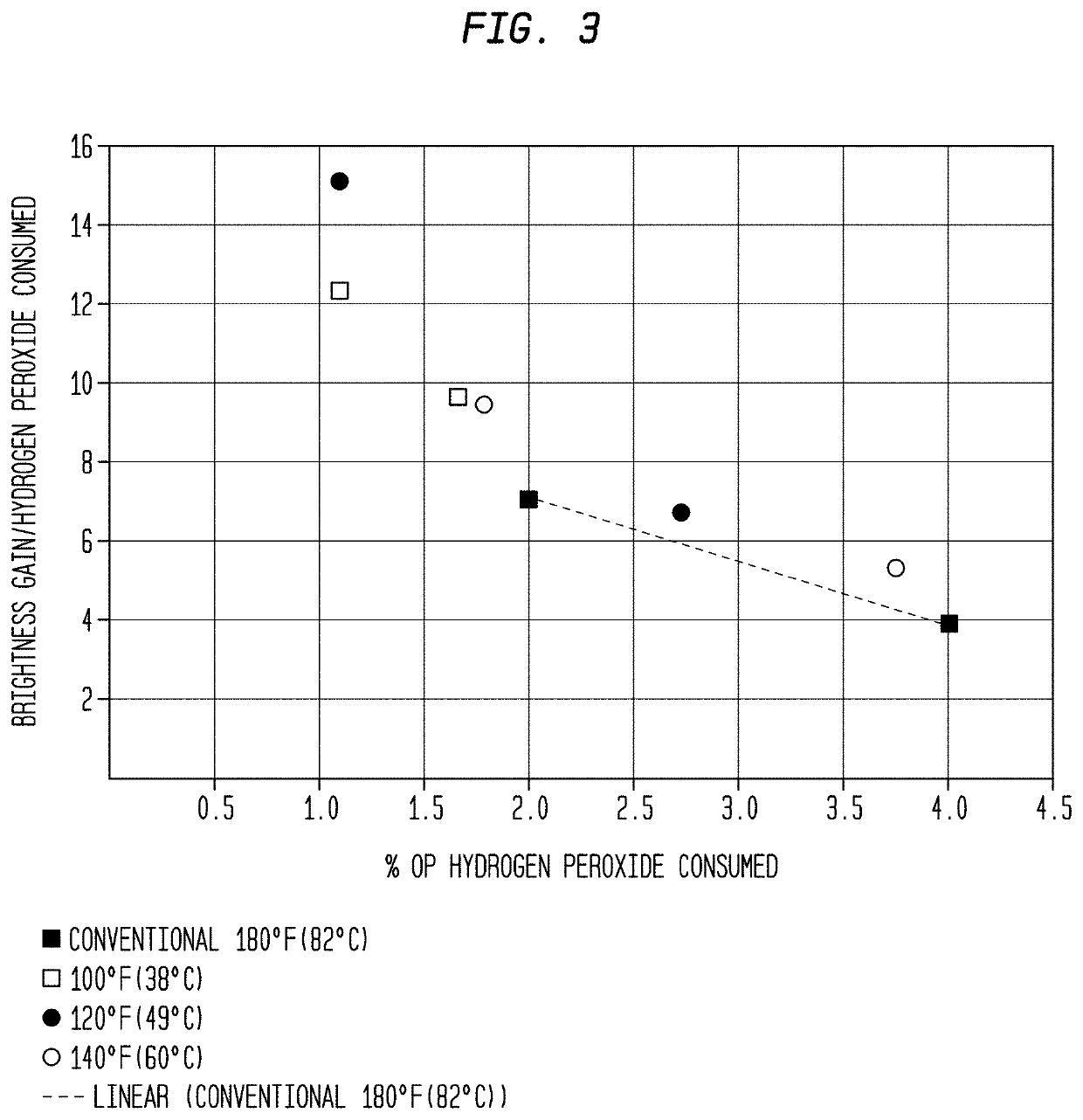High Efficiency Fiber Bleaching Process
a technology of fiber bleaching and fibers, applied in the field of bleaching cellulosic pulps, can solve the problems of low bleaching efficiency, low efficiency of conventional bleaching processes, and low cost of operation and capital costs, and achieve high bleaching efficiency, low cost, and high brightness
- Summary
- Abstract
- Description
- Claims
- Application Information
AI Technical Summary
Benefits of technology
Problems solved by technology
Method used
Image
Examples
embodiment
[0110 No. 5 is the process according to any one of Embodiment Nos. 1 to 4, wherein the extended duration bleaching temperature is from 118.4° F. (48° C.) to 131° F. (55° C.).
[0111]Embodiment No. 6 is the process according to any one of Embodiment Nos. 1 to 5, wherein the retention time in the extended duration bleaching stage is from 10 hours to 20 hours.
[0112]Embodiment No. 7 is the process according to any one of Embodiment Nos. 1 to 6, wherein the extended duration bleaching stage is carried out at a pH of from 10 to 11.
[0113]Embodiment No. 8 is the process according to any one of Embodiment Nos. 1 to 7, wherein the aqueous pulp is provided to the extended duration bleaching stage at a consistency of from 12.5% to 17.5%.
[0114]Embodiment No. 9 is the process according to any one of Embodiment Nos. 1 to 7, wherein the extended duration bleaching stage is carried out with a peroxy bleaching agent applied to the cellulosic pulp in an amount of from 0.1 kg-moles bleaching agent / metric...
PUM
| Property | Measurement | Unit |
|---|---|---|
| temperature | aaaaa | aaaaa |
| temperature | aaaaa | aaaaa |
| temperature | aaaaa | aaaaa |
Abstract
Description
Claims
Application Information
 Login to View More
Login to View More - R&D
- Intellectual Property
- Life Sciences
- Materials
- Tech Scout
- Unparalleled Data Quality
- Higher Quality Content
- 60% Fewer Hallucinations
Browse by: Latest US Patents, China's latest patents, Technical Efficacy Thesaurus, Application Domain, Technology Topic, Popular Technical Reports.
© 2025 PatSnap. All rights reserved.Legal|Privacy policy|Modern Slavery Act Transparency Statement|Sitemap|About US| Contact US: help@patsnap.com



